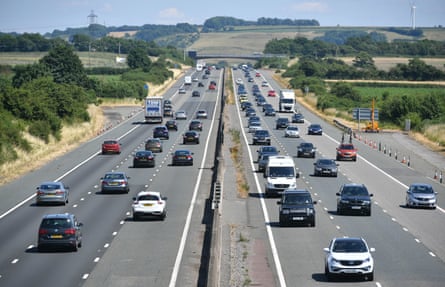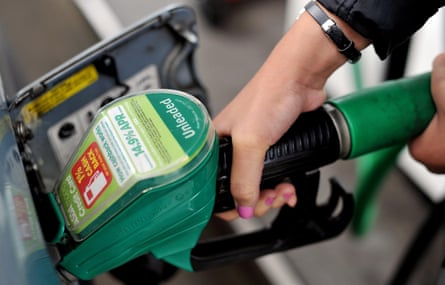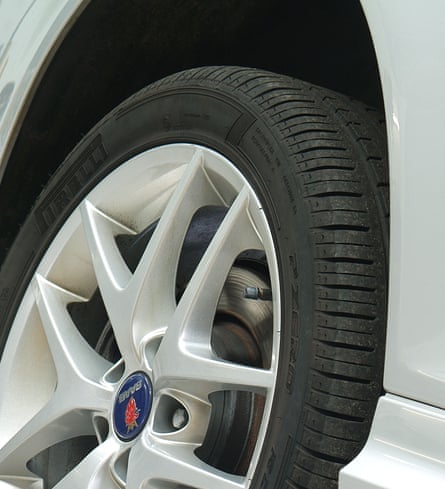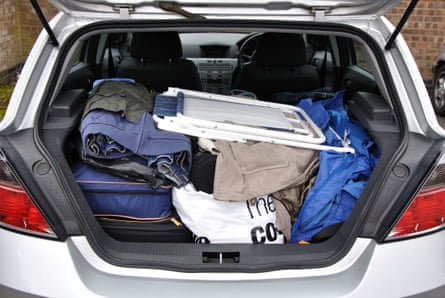
The cost of living crisis is hitting the UK’s motorists hard, with each day seeming to bring news of a record high for fuel prices.
Many motorists are already shelling out well over £1,000 a year to fill their tanks, and most commentators believe prices will continue to push upwards in the coming days, and that petrol may evenhit £2 a litre.
It is a worrying time for those reliant on their vehicle but there are things you can do to save money, ranging from small changes in the way you drive to being savvy about where you fill up and how you pay.
Official data published on Tuesday revealed that UK motorists were hit by the steepest weekly rise in fuel prices in more than 18 years after Russia’s invasion of Ukraine.
The cost of filling up a typical 55-litre family car had gone up by more than £2 in only a week
The UK’s Department for Business, Energy and Industrial Strategy said the average price of a litre of unleaded petrol went up by 3.7p between 28 February and 7 March, to just under 153p. Over the same period, diesel prices increased by 5.2p to an average of 158.6p a litre.
That means the cost of filling up a typical 55-litre family car had gone up by more than £2 in only a week.
The rises have continued as the week has gone on. The RAC said that by Wednesday, after the UK’s announcement that it will phase out Russian oil imports, petrol and diesel had risen to 159.6p and 167.4p. It is all a far cry from May 2020, when the average price of a litre of unleaded dipped below 105p.
The AA reckons pump prices will continue to go up in the next few days, and some experts expect diesel prices to rise at a faster rate, as the UK reportedly gets 15-20% of its supplies from Russia. A few filling stations have already breached the £2 a litre of diesel barrier.
However, there is a sliver of good news that will counter some of that extra cost. “We are moving from winter to spring, which means engines don’t have to work so hard, and more daylight driving means the burden of headlights, wipers and heaters is reduced,” the AA says.
That, plus employing some simple eco-driving techniques, should improve fuel efficiency by about three extra miles a gallon. Roughly that is the equivalent of a 9p-a-litre saving at the pump, it adds.
 View image in fullscreenThe AA says: ‘We are moving from winter to spring, which means engines don’t have to work so hard.’ Photograph: Ben Birchall/PA
View image in fullscreenThe AA says: ‘We are moving from winter to spring, which means engines don’t have to work so hard.’ Photograph: Ben Birchall/PA
The research website NimbleFins recently put the average annual running cost for a car in the UK, excluding purchase and depreciation, at £1,977. It said almost half of that – £961 a year – was the bill for petrol or diesel. In second place, at £484 a year, was car insurance, while repairs and servicing came in third at £273.
There are changes people can make that will have a huge impact on their spending, such as switching to an electric vehicle or one that is cheaper to run, but these will almost certainly involve hefty upfront costs. Instead, we have focused on quick fixes that do not involve a big outlay.
Drive more efficiently
This includes things such as driving smoothly (as a rough rule, keep the revs between 1,500 and 2,500rpm if it’s a petrol engine, and 1,200 and 2,000rpm if it’s diesel, says the consumer body Which?), avoiding excessive braking and acceleration, changing up a gear early, and sticking to the speed limit: the AA and others say that driving on the motorway at 80mph can use up to 25% more fuel than driving at 70mph.
The AA has a useful webpage on driving more efficiently, and there are a number of videos on YouTube that have been put up by organisations such as driving schools.
Fill up at the supermarket
A litre of petrol at supermarkets typically costs a few pence less than fuel at other forecourts, according to Which?.
“The best prices are often found at supermarket forecourts and, when filling up, remember that most cars get little benefit from expensive premium unleaded petrol,” says Adam French from Which?.
The money-saving website Wethrift says that while supermarket fuel usually comes from the same refineries as the big brands such as Shell or Esso, these brands will usually add special additives to their own fuels in order to improve efficiency and performance, which is why they tend to cost more.
However, Which? says petrol from a supermarket filling station “is of the same quality” as that from other locations.
 View image in fullscreenWhich? says a litre of petrol at supermarkets typically costs a few pence less than fuel at other forecourts. Photograph: Nick Ansell/PA
View image in fullscreenWhich? says a litre of petrol at supermarkets typically costs a few pence less than fuel at other forecourts. Photograph: Nick Ansell/PA
From time to time, supermarkets incentivise shoppers by offering money off fuel when they spend a certain amount on groceries. Last month, Morrisons was running an offer where customers spending £40 or more in-store got a voucher worth 7p off a litre of fuel. Tesco and Sainsbury’s run similar time-limited offers, so keep an eye out for these.
Don’t forget about the supermarket loyalty schemes. For example, with a Tesco Clubcard you can earn one point for every £2 spent when you fill up at the supermarket’s petrol stations. You can spend Clubcard vouchers on fuel at all Tesco petrol stations at face value.
Sign up to a petrol station loyalty scheme
BP’s rewards programme is called BPme, and you earn one point for every litre of regular fuel, two points for every litre of Ultimate fuel, and one point for each £1 spent in-store. You can redeem points on fuel and shop products (200 points equals £1 off).
Shell’s scheme is called Shell Go+. Points are called visits and when you spend £10 or more on fuel or £2 or more in-store you will earn one. Reach 10 and you get a money-off “fuel reward”.
Texaco has Star Rewards: when you buy one litre of fuel, you get one point worth 1p. When you hit 500 points, they can be redeemed for a £5 voucher, making this one of the more generous schemes.
Meanwhile, Esso Nectar allows you to collect Nectar points on fuel purchases at participating Esso petrol stations. You earn one point for every litre bought (you can also collect points on items you buy in the shop), and 300 points gets you 5p off a litre of fuel.
Use a cashback debit or credit card
The US bank Chase’s newish UK current account comes with a debit card that lets you earn 1% cashback on everyday purchases for a year, including petrol.
American Express offers some of the best-paying cashback credit cards. Its Platinum Cashback Everyday card gives new customers 5% cashback on purchases (up to £100) for the first three months. After that, it’s up to 1% cashback, depending on how much you spend. But not everywhere takes Amex, and be wary about racking up debt.
Shop around
The PetrolPrices website and app let you see where the best price for fuel is in your local area. You have to create an account (it’s free), then it shows you the cheapest or nearest petrol stations. This week it was claiming it could help some drivers of petrol cars save £225 a year.
 View image in fullscreenKeep tyres appropriately pumped up to reduce fuel consumption. Photograph: David Burton/Alamy
View image in fullscreenKeep tyres appropriately pumped up to reduce fuel consumption. Photograph: David Burton/Alamy
Many local news websites also provide updates on the cheapest places to fill up.
Think about your journeys
If you have got a trip coming up – you are driving to visit family for a few days, say – it’s probably a no-brainer in the current climate to fill up when you arrive at your destination rather than waiting until you set off home. With prices rising by the day, it could be more expensive when it is time to leave.
Check your tyres
“Incorrect tyre pressure is not only unsafe, it could be costing a small fortune in fuel,” says Richard Bruce, the motoring director at Halfords. The lower the tyre pressure, the more fuel a car will use to push them around, so keep them pumped up appropriately to reduce consumption.
Use a satnav
As well as showing you the quickest route to your destination, they can also work in real time and help you avoid getting stuck in jams. Some will even select the most economical route to help you avoid fuel-gobbling obstacles such as large hills, says Nick Drewe at Wethrift.
Google Maps has been rolling out eco-friendly routeing where, in addition to showing the fastest route, it will also display the one that is the most fuel efficient (if it doesn’t happen to also be the fastest).
Empty the boot
Are you carrying around loads of unnecessary stuff? Maybe find another home for it because the heavier your car, the more fuel you will need to move it around. Similarly, remove roof boxes and bike racks if they are not being used much (or at all).
 View image in fullscreenDo you carry unnecessary items in the boot of your car? Photograph: Graham Oliver/Alamy
View image in fullscreenDo you carry unnecessary items in the boot of your car? Photograph: Graham Oliver/Alamy
Drive less
For many this will be tricky because of where they live or work or their family situation but some are already cutting back on shopping and recreational trips by car. One leading campaigner this week said he expects mileage to fall by as much as 30% in 2022.
Some may want to investigate carsharing – AKA lift-sharing – for getting to work. Liftshare calls itself the UK’s biggest carsharing community, so it’s a good place to start if you work somewhere where there are lots of other companies. If you work for a big employer, its intranet might be good place to find a sharer.
Cut the cost of insurance
As well as reducing your petrol consumption, you should check you are getting the best deal on insurance when it is time to renew your policy. The good news is that, according to the industry body the Association of British Insurers, the average cost of motor cover in 2021 was at a six-year low, but make sure you shop around rather than assuming the policy you are being offered is the best deal.

